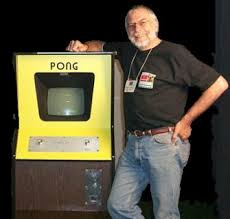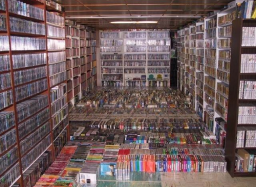This week we’re going back to one of the greatest years for consumer technology; 1983. During which the world received its first Compaq IBM computer, was introduced to the arcade game Mario Bros, and more importantly, the year Nintendo released the Family Computer. The Famicom arguably provided the spark which led to Japan becoming the worlds greatest gaming mecca, attracting thousands of passionate enthusiasts every year.

With its sharp corners, its red, white, and gold colour scheme, and hard wired controllers the Family Computer (Famicom) screams retro-ness
Two years after the Famicom’s release, North Americans were introduced to the Nintendo Entertainment System (NES), however little New Zealand wouldn’t see the PAL NES until 1987! As we all well know in its day the NES didn’t fare well in the PAL regions, losing out to Sega’s Master System which has now resulted in collectors having to have deep pockets to pay for their precious carts. I for one refuse to pay the current rates for NES games, instead opting to concentrate on developing a concise and well respected Famicom collection. Yes, 90% of the Famicom games I own were bought in Japan, however, even from New Zealand I still see opportunities to grab epic games at great prices.
The hardware

Similar in size but very different in styling. The decision to loose the concave A and B buttons for the AV Famicom has resulted in disappointed purists
The Famicom is something special when compared with consoles of today. It was so successful in the Japanese market Nintendo saw the benefit in releasing a revised model in 1993 that did away with the rf modulator and hardwired controllers, instead offering a composite AV connection and dog bone designed pads. The original Famicom has its use as a great shelf-piece; however it’s the AV Famicom that you definitely want to game on and is without a doubt worth paying that little extra for. Both consoles are dwarfed by the over sized NES and only take up a small amount of cabinet real estate.

If you must have the original model I would recommend hunting out something that hasn’t turned tobacco yellow. Sure there’s ways of getting rid of the yellow, however you’re not going to be left an original looking console. There are often “junk” consoles that make it onto ebay and be aware, there’s a reason why they are sold as junk. Not only are the often discoloured beyond belief, many suffer from problems such as worn buttons, faulty connectors, or simply don’t work. It’s well worth spending the extra on something that has been tested and doesn’t look like it’s been pissed on every day for the past 10 years.
As mentioned earlier, the AV Famicom was updated where it needed updating, and is a must have for any serious Famicom gamer. These units are readily available boxed and strangely enough Nintendo released them without AC adapters. This isn’t a huge loss, as bizarre as it sounds the original Sega Mega Drive 1 power supply will do the job and negates the need for a step-down transformer.
The Software
 Like the NES, Famicom games came in cardboard boxes which can mean complete games demand premium prices. However, unlike the NES the Famicom was owned by Japanese gamers who obviously take much better care of their games, resulting in more complete games being available at better prices. It’s not only boxed games which are available at decent prices, Famicom carts are a dime-a-dozen in Japan with most retro-gaming stores having a dedicated bin full of carts priced at 100 yen (about $1!). Don’t expect to find such prices online, however the prices of the must have games will definitely see you amass a worthy collection a lot earlier than shopping for NES games.
Like the NES, Famicom games came in cardboard boxes which can mean complete games demand premium prices. However, unlike the NES the Famicom was owned by Japanese gamers who obviously take much better care of their games, resulting in more complete games being available at better prices. It’s not only boxed games which are available at decent prices, Famicom carts are a dime-a-dozen in Japan with most retro-gaming stores having a dedicated bin full of carts priced at 100 yen (about $1!). Don’t expect to find such prices online, however the prices of the must have games will definitely see you amass a worthy collection a lot earlier than shopping for NES games.

The cosmetic differences between the NES, Famicom, and their carts is obvious, however after spending sometime exploring the Famicoms library the real differences become obvious. In its time Nintendo wanted to be seen as the “family friendly” system and directed its marketing towards children, and as such enforced a strict policy of censoring sexual, religious, and profanity in games. Coupled with its long sales life in Japan, owning a Famicom is not only going to give you access to affordable versions of Ninja Gaiden, Megaman (Rockman), Contra, and TMNT, it will open you’re world to a whole range of games NES players have never heard of, such as: Wai Wai World, Devil world, Youkai Douchuki, Demon Castle Special: I’m Kid Dracula, Parodius Da!, and Splatterhouse Wanpaku Graffiti.
So, why not?
One of the biggest drawbacks of owning Japanese released games is definitely the language barrier, although it’s often not as prominent as people initially think. I’ve discovered that many games actually have English menus and some go as far as having in-game text in English. Provided you’re somewhat like me and not a fan of RPGs, there will be no trouble enjoy the Famicoms range of platform, shooter, puzzle, and run-and-gun games.
Tell me more..
Now, I hear you all asking where should I buy Famicom games. Well there is quite a range of websites which sell Japanese games and most of which have a worthy range of Famicom titles. Expect to pay more for boxed, however if you can live without instructions you can definitely save a few bob. My main problem with the websites I’ve come across is their postage charges, which are often excessive. In reality a Famicom cart shouldn’t cost the seller more than 5USD to send to New Zealand, Australia, or the UK. This may surprise a few of you but ebay is a great place to score Famicom games and awesome prices. There are a number of Japanese sellers who are literally constantly listing games for a wide range of platforms as auctions. It may involve setting phone reminders and taking impromptu breaks from work (or sleep), however in my experience postage is always fair and depending on how many other bidders there are bargains can definitely be found.
Final Tips:
- Find out how a seller charges for combined postage. Some let you shop and give you an actual total when you ask for an invoice while others may let you continue to shop and half the postage of each additional item.
- Most Japanese game and thrift stores have shrink wrap machines and shrink wrap their retro-game stock. I would never buy a supposedly factory sealed Japanese released game, the risk its a reseal is just too high.
- When dealing with less experienced sellers make sure they understand that New Zealand accepts Small Packet SAL postage. Packages can weigh up to 2kg, with 2kgs costing roughly 24NZD to send. Expect to wait 10-14 days.
- Have fun! This is what its all about isn’t it..













